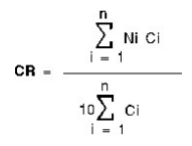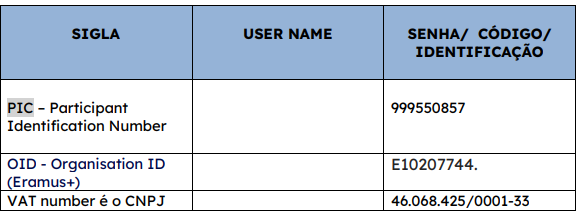1 – Please shortly explain to what extent the planned mobility reinforces the capacities and international scope of your university.
The University of Campinas (Unicamp) is currently committed towards increasing its international insertion in different areas of knowledge through high quality teaching and international level research. To achieve this goal, we we must work on increasing student exchange with selected international partner institutions and to strengthen teaching and research cooperation around common themes with some of these partners.
Unicamp has a large number of standing international cooperation agreements (over 600) and is currently choosing from its partner universities a select group with which teaching and research cooperation may be strengthened.
2 – How many and which types of mobilities do you foresee to send to (X university / nome da universidade)?
We would be interested in exchanging students, teaching staff and training staff, in order to increase the internationalization process of our university.
Staff/ teaching staff and training staff
Number: 6 (número a ser definido pelo responsável pelo acordo).
Students
Number: up to 3 students each year (número a ser definido pelo responsável pelo acordo)
3 – Please justify the choice of mobility types and numbers with respect to your internationalization strategy.
For student mobility, we believe it will create an opportunity for undergraduate and graduate students to take part on courses that may deepen their understanding of subjects they are already in contact with at Unicamp or to complement their curriculum by putting them in touch with altogether new courses or subjects currently not being offered at their home university. In addition, students will enhance their academic and professional abilities.
For Unicamp academic staff, the program will be an opportunity for capacity building in teaching and research, through knowledge exchanges with foreign counterparts. The academic staff will have a chance to experience teaching abroad and to cooperate with foreign researchers. Similarly, the university will benefit from incoming academic staff that may engage in teaching and research activities at Unicamp.
For non-academic staff, the opportunity to visit a foreign university is also valuable. Both Unicamp and (X University) staff may benefit from long-term contacts they will be able to establish and both sides may learn from each other’s experiences in the management of their respective organizations.
4 – Please shortly explain the potential impact of the mobility at local, regional and national level.
Unicamp is a leading university in Brazil, but it also has a strong connection with local and regional institutions. Through teaching, research and outreach the university has contributed to shaping Campinas into one of the country’s most robust science hubs, building knowledge capacities and creating about 1.019 spin-off companies with over 38,000 direct jobs, generating a total yearly revenue of more than US$ 3 billion (Atenção: dados como estes precisam ser sempre verificados e atualizados).
The project may contribute to strengthening this position, by expandin international collaboration and by improving the overall quality and impact.
We expect the project to have relevant direct and indirect effects over institutional capacities.
The direct effects are connected to academic gains derived from the project. Overall, the project will contribute to the success of our current efforts towards internationalization. By creating mobility opportunities for faculty staff and students the project is sure to have a positive effect on teaching and research at Unicamp and will contribute to the university’s internationalization strategy.
5 – How does your institution work in terms of selection of participants and the support provided to them?
We open public calls ( on our website and social midias ) to select our exchange students. Here’s an example one of such public calls: https://www.internationaloffice.hom.unicamp.br/estudantes/editais/
For the implementation and follow up on all information are available at: https://www.internationaloffice.hom.unicamp.br/estudantes/informacoesgerais/
6 – Are equal opportunities, social equity ensured? How is participation of disadvantaged persons promoted?
Unicamp has established its Affirmative Action Policy addressing the admission of students from lower-income that studied in public schools and also students from African or indigenous descent (racial and ethnic quotas).
It is applied at the entrance examination, see the article below: https://www.unicamp.br/unicamp/ju/noticias/2017/11/21/em-decisaohistorica-unicamp-aprova-cotas-etnico-raciais-e-vestibular
7 – How are the mechanisms envisaged for recognition of student learning outcomes (e.g. ECTS or other mechanisms) ?
Credit System
At Unicamp, each credit equals 15 semester hours of academic activity
(lectures, labs, tutorials, etc).
● A 4-credit course = 60 hours of academic activity per semester.
● A student taking 24 credits will have a total of 360 hours of academic activities in that semester.
After successfully completing the course, the student is then awarded the equivalent number of credits.
Grading System
The evaluation of academic performance is generally expressed by grades from zero (0) to ten (10). To be approved in a course, the student must get a grade equal or greater than five (5) and attend 75% of classes.
There are also a few pass/fail classes. If the student successfully completes then, he/she receives the credits but not a specific grade.
The approaches to verify the student learning process (test, exercises, reposts, projects, course attendance, etc.) are established by the instructor responsible for the course, with the approval of the academic program coordinator.
The student performance in the whole program is measured by the Cumulative Grade Average (CR).
Cumulative Grade Average (CR)
The student performance in the whole program is measured by the Cumulative Grade Average (CR), which varies from zero (0) to one (1), and is calculated by the formula:

N i = grade corresponding to the i-th course taken among the ‘n’ courses taken by the student in this University.
C i = number of credits corresponding to the i-th course.
Note (1): Regular and exchange students at Unicamp are graded equally.
However, exchange students may have a limited number of credit hours that they may take per semester.
Note (2): All information presented here has been translated and adapted from DAC’s General Graduation Regiment, which can be found here: https://www.dac.unicamp.br/portal/graduacao/regimento-geral
Note (3): Unicamp is not responsible for the recognition of credits in foreign
institutions.
ECTS (European Credit Transfer System) equivalency
There is no official equivalency between Credits at Unicamp and ECTS. One suggestion is that the student finds out the official number of hours for each ECTS credit at the University abroad and then compares it to the number of hours for each credit at Unicamp. As mentioned above, at Unicamp, each credit equals 15 semester hours of academic activity (lectures, labs, tutorials, etc).
8 – What is your institution’s Organization ID?
The OID is E10207744
9 – What is your institution’s PIC number?
The PIC number is 999550857.
(User names União Europeia):

